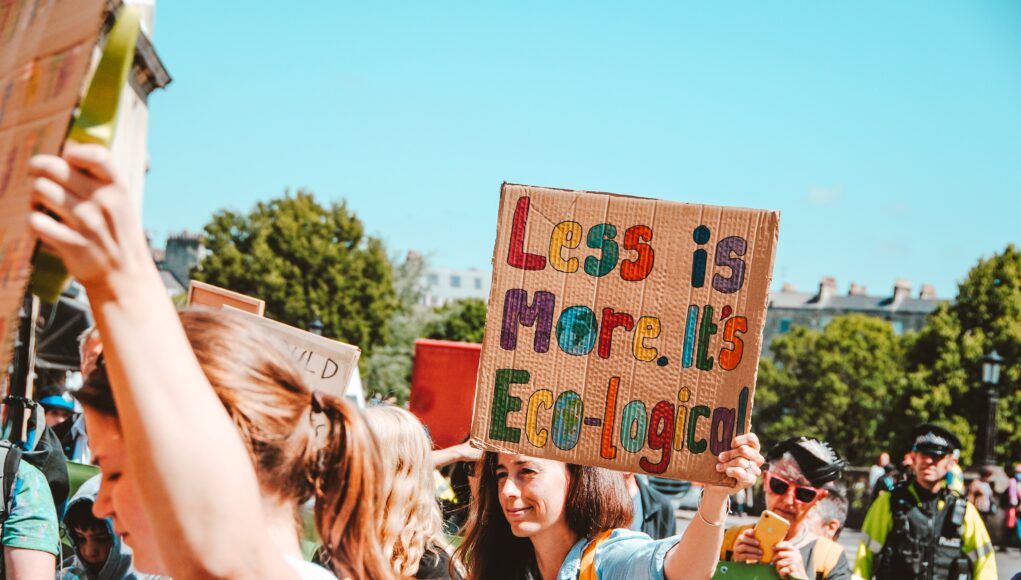THE ZERO WASTE LIFECYCLE
Have you just heard about the zero waste lifecycle, and that has left to curious? Do you want to know more about it? If yes, then this article is for you.
So let us start right from the basics.
What is the zero waste movement?
The zero-waste movement was started by Bea Johnson in December 2000.
This movement believes in sustainable development, waste prevention and conscious consumption. The zero movement brought an attitude of ethical and economical lifestyle.
Zero waste movement, as the name suggests is an approach to eliminating waste completely.
How? Let us look at it.
What are the 5 R’s, of the zero waste movement?
The zero-waste movement follows 5 R’s, which aim to eliminate waste.
1. REFUSE

The first R of the zero waste movement is to refuse.
This attacks the attitude of hoarding anything free or cheap. The first step to follow the first R is to refuse the free items that you think don’t have any purpose and are polluting the environment.
Say no to the plastic water bottles by carrying your own bottles. Don’t accept business cards, posters and pamphlets. Advertisement and marketing can be easily done digitally. Similarly, if you wish to start a business, refuse to print cards and posters. Instead, shift your focus to digital marketing. It is a way more environmentally conscious method.
Similar consciousness can be shown, in daily lives as well.
There should be a refusal when it comes to buying plastic toys and showpieces.
Notebooks and books should be fully used and not wasted. Shredding your unnecessary papers is also a good idea.
ALSO READ: THREATS POSED BY ARTIFICIAL INTELLIGENCE(AI)
2. REDUCE

The second R of the zero waste movement is to reduce.
This aims to eliminate waste by first reducing the overall activities that lead to wastage. In order to practice this R, all you have to do is to let off the spirit of consumerism.
Nature has enough for everyone’s needs but not for everyone’s greed.
Review your lifestyle and purchase only what you need. Cut down on your unnecessary purchases, by taking only what you absolutely need for the time being.
For example, when you go out grocery shopping, buy only what you can consume. When you go out to buy some clothes, say no to meaningless shopping and unnecessary hoarding. Reducing your purchases would not only save resources but would also help your budget.
3. REUSE

The third R of the zero waste movement is to reuse or repair.
Reusing and repairing aims to terminate a lot of new demands that would originate.
Often we throw away our stuff quite easily. If something is even a little misshaped, most of us tend to replace it with a new substitute. Surveys show that a lot of privileged people don’t wish to repeat their clothes because they have a pressure of ‘social status’. However, this behaviour is not only ridiculous but also extremely insensitive.
When we throw away something, it naturally leads to a demand for a new replacement. This causes huge demands, putting a tremendous amount of pressure on the resources.
So reusing the products we have and repairing the ones that can be repaired, would not just save money but also save the environment.
4. RECYCLE

The fourth R of the zero waste movement is to recycle.
Throwing away things and materials that are no longer of use seems convenient, but recycling is what helps the planet.
When wastes are recycled, they are converted into reusable materials and objects. This way nothing actually is discarded or wasted. Recycling reduces the pressure on the resources of the planet. It saves energy and therefore reduces greenhouse gas emissions, which helps us in tackling climate change.
There are three types of recycling – primary, secondary and tertiary. It is also important to note that the process of recycling is different for each material.
If citizens are conscious enough to recycle their used products, they would help the environment to a great deal. And this is the exact idea of this R.
5. ROT

The fifth and the final R of the zero waste movement is to Rot.
Rotting or decomposition is the process of decaying dead organic substances.
In this process, bacteria and fungi help to break the dead organic substances into simpler substances. It creates highly efficient manures and rich fertilizers.
This process not just produces rich fertilizers by dead organic substances but also improves the fertility of the soil.
This R of the movement believes that absolutely nothing should be simply discarded. If organic waste can’t be repaired or recycled, even then it can be used efficiently
ALSO READ: THE 2030 AGENDA FOR SUSTAINABLE DEVELOPMENT
Difference between Zero Waste and recycling
People often confuse between zero waste and recycling. They think that both concepts are similar to each other. However, this is not the case. Recycling is concerned with the conversion of wastes into reusable and efficient substances.
But Zero waste is a much wider concept. It functions on many principles and recycling is just one of them.
Benefits of zero waste movement
1. Minimizes pollution –
Zero waste attempts to use a product to the very last point so that there is considerably less pressure on the resources. Mining, deforestation etc. is thus controlled, ultimately minimizing pollution.
2. Creates job opportunities
Recycling, rotting, repairing are all lengthy procedures that demand skill and time. This creates a lot of green jobs, proving employment to a large scale of people.
3. Reduces global warming
Zero waste controls greenhouse emissions, helping us tackle climate change. This also aims to control the rising temperature and reduces global warming.
4. Prevents wastage
This movement strives the basis of conscious shopping and purchasing only what you need. This promotes social equity and also reduces wastage of many kinds.
5. Durable products
When people are conscious and aware, they would purchase products that would last long. This demand expects the producers to be careful of the quality of the product.
So, this is the zero-waste lifestyle. It makes the planet smile and helps us exponentially.



































Good post. I learn something totally new and challenging on sites I stumbleupon everyday. It will always be helpful to read content from other writers and practice a little something from other websites.